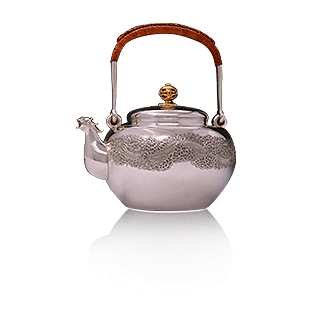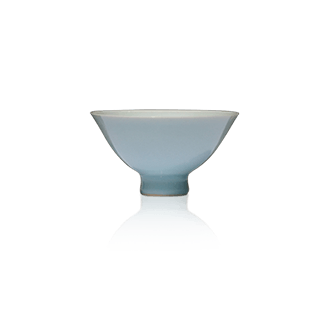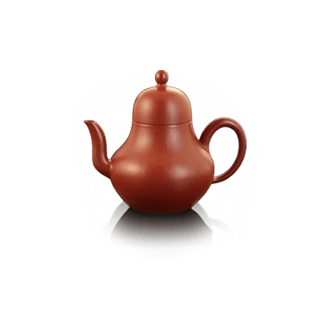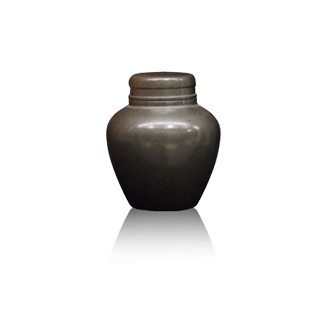

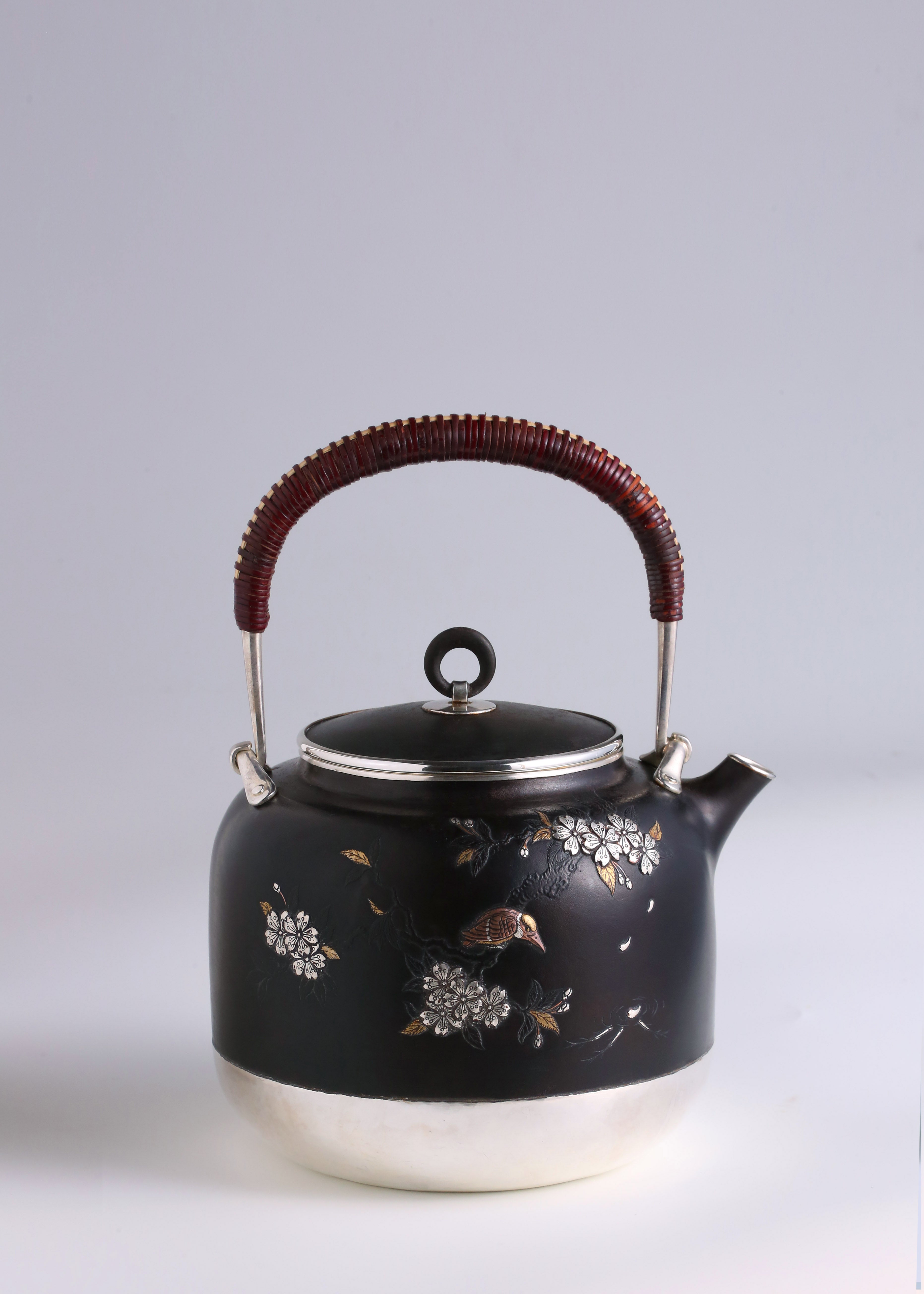

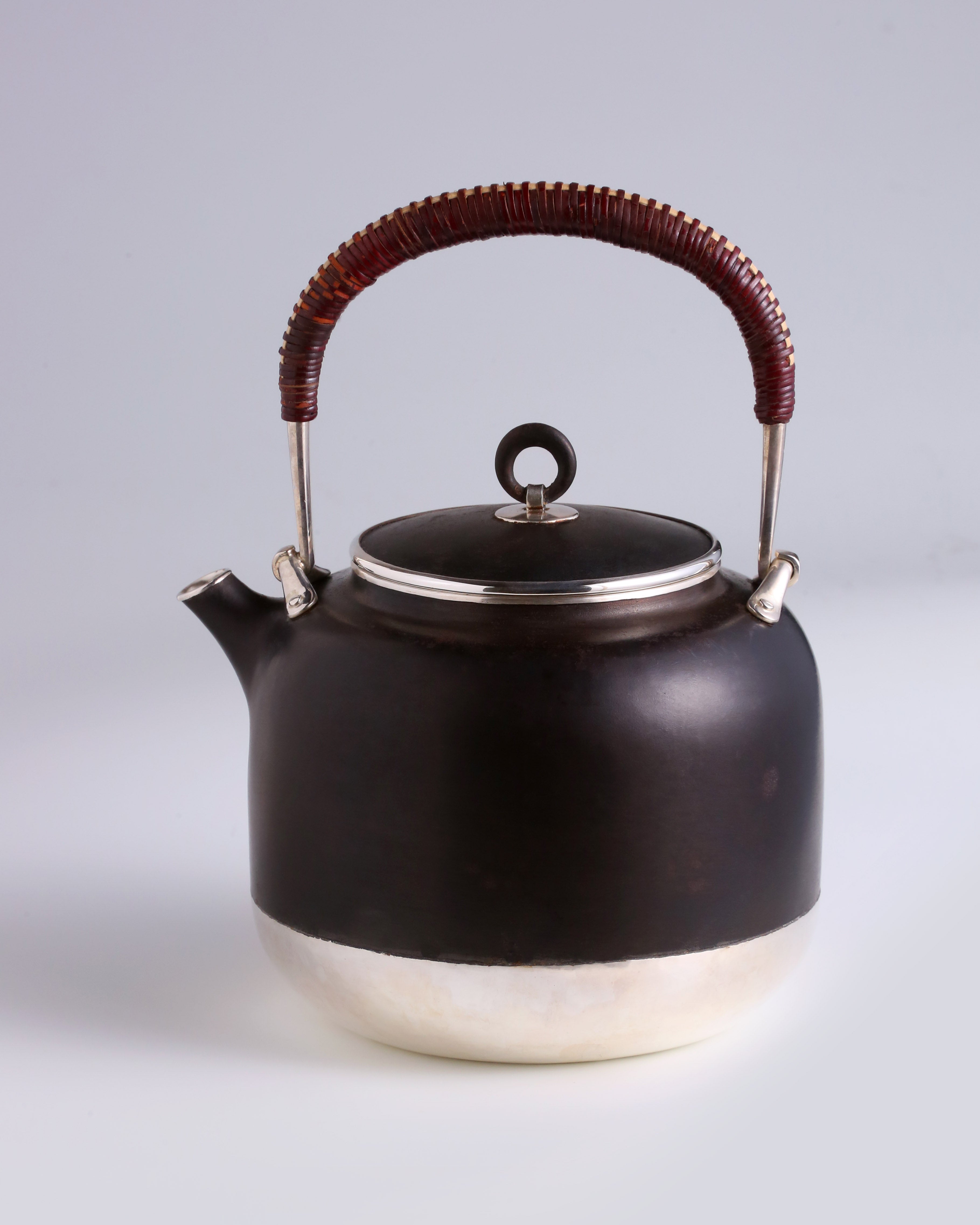
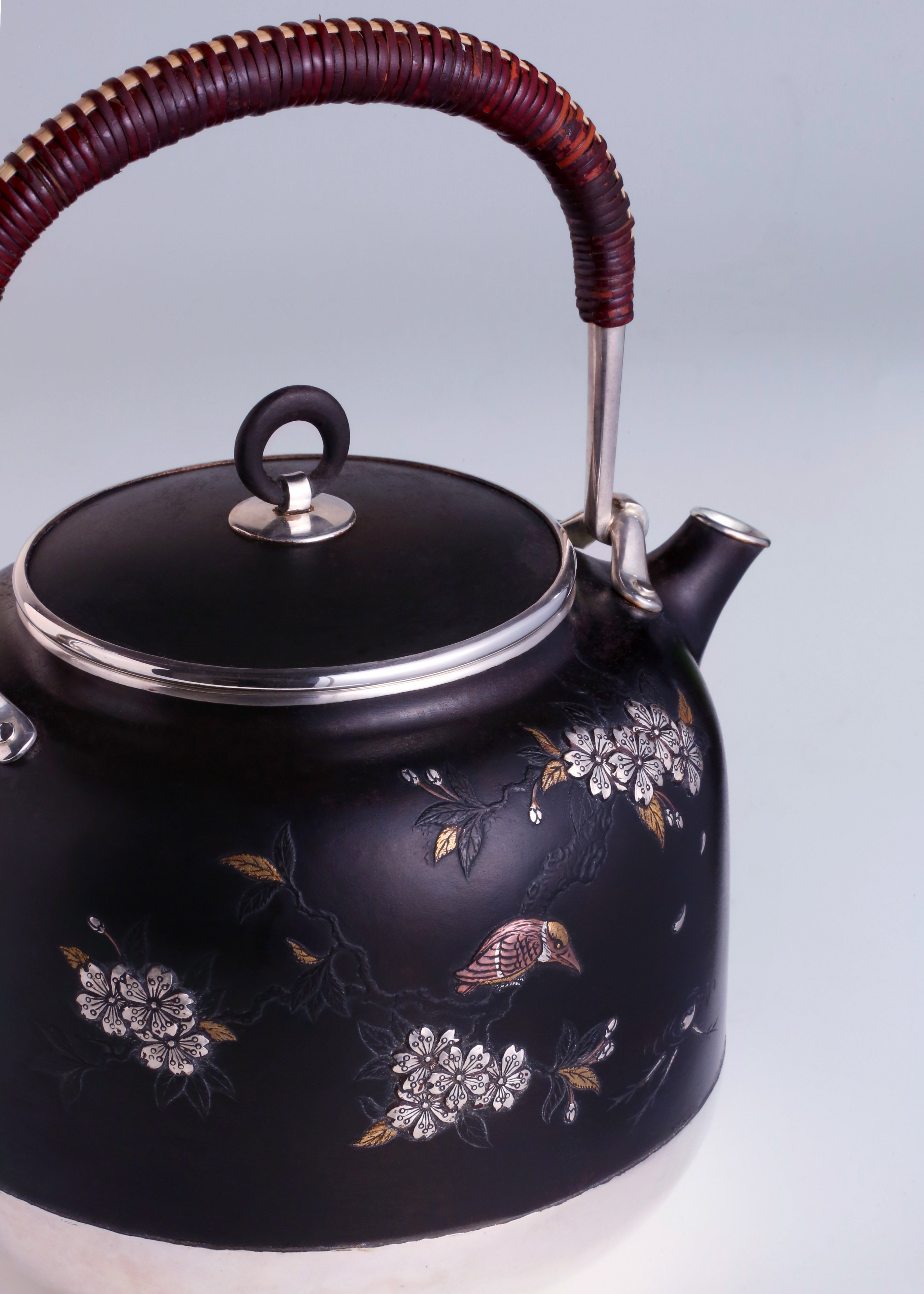
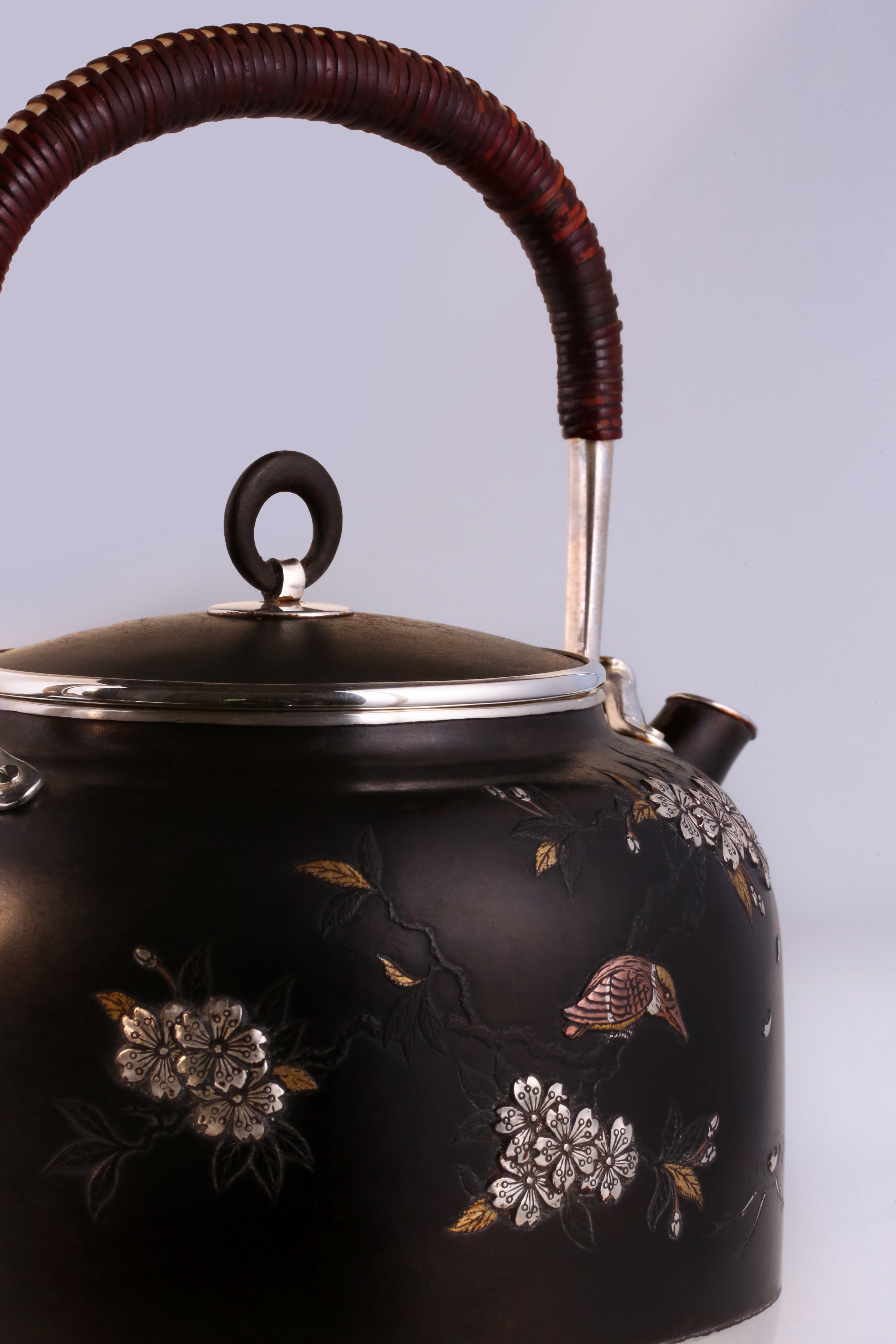
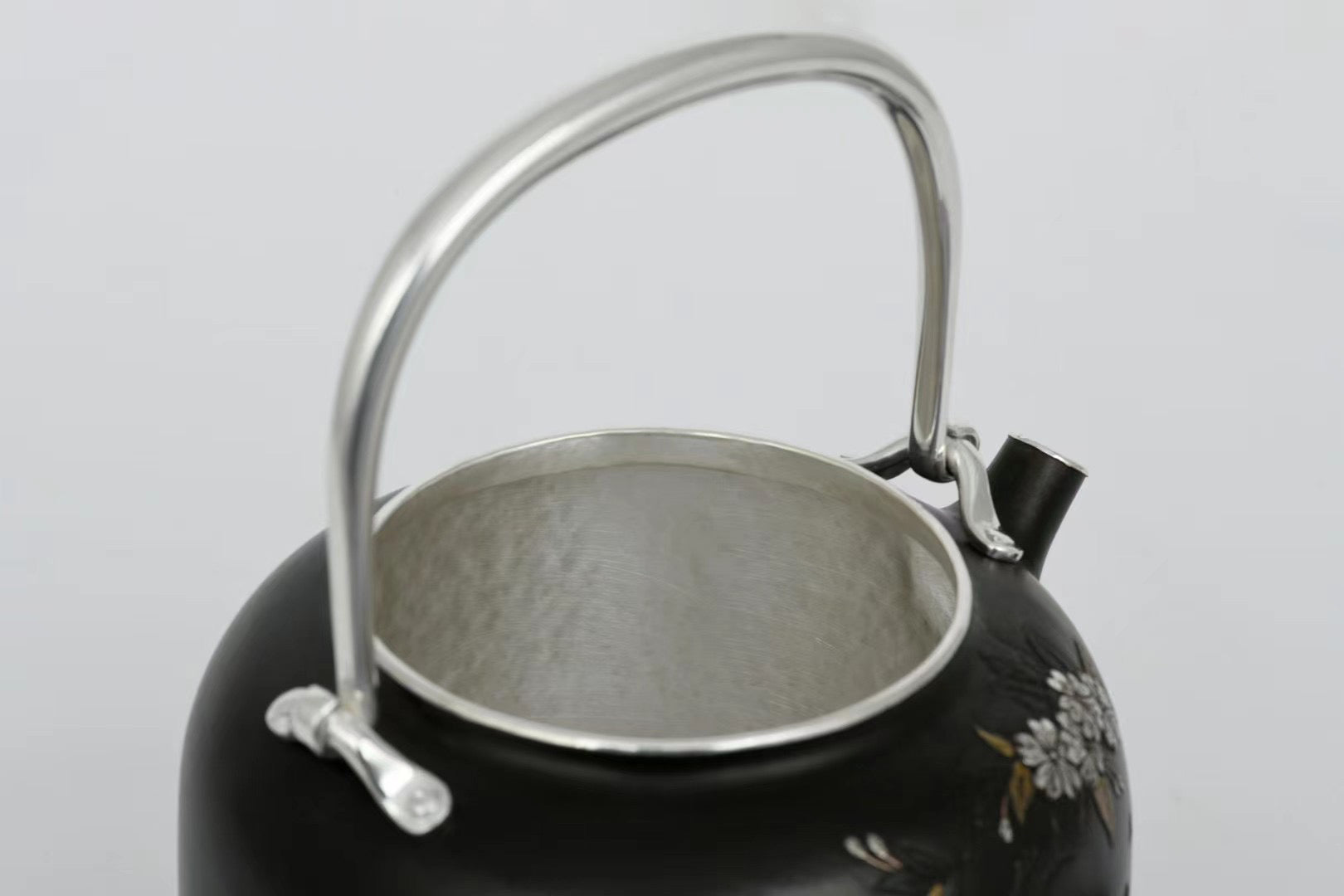

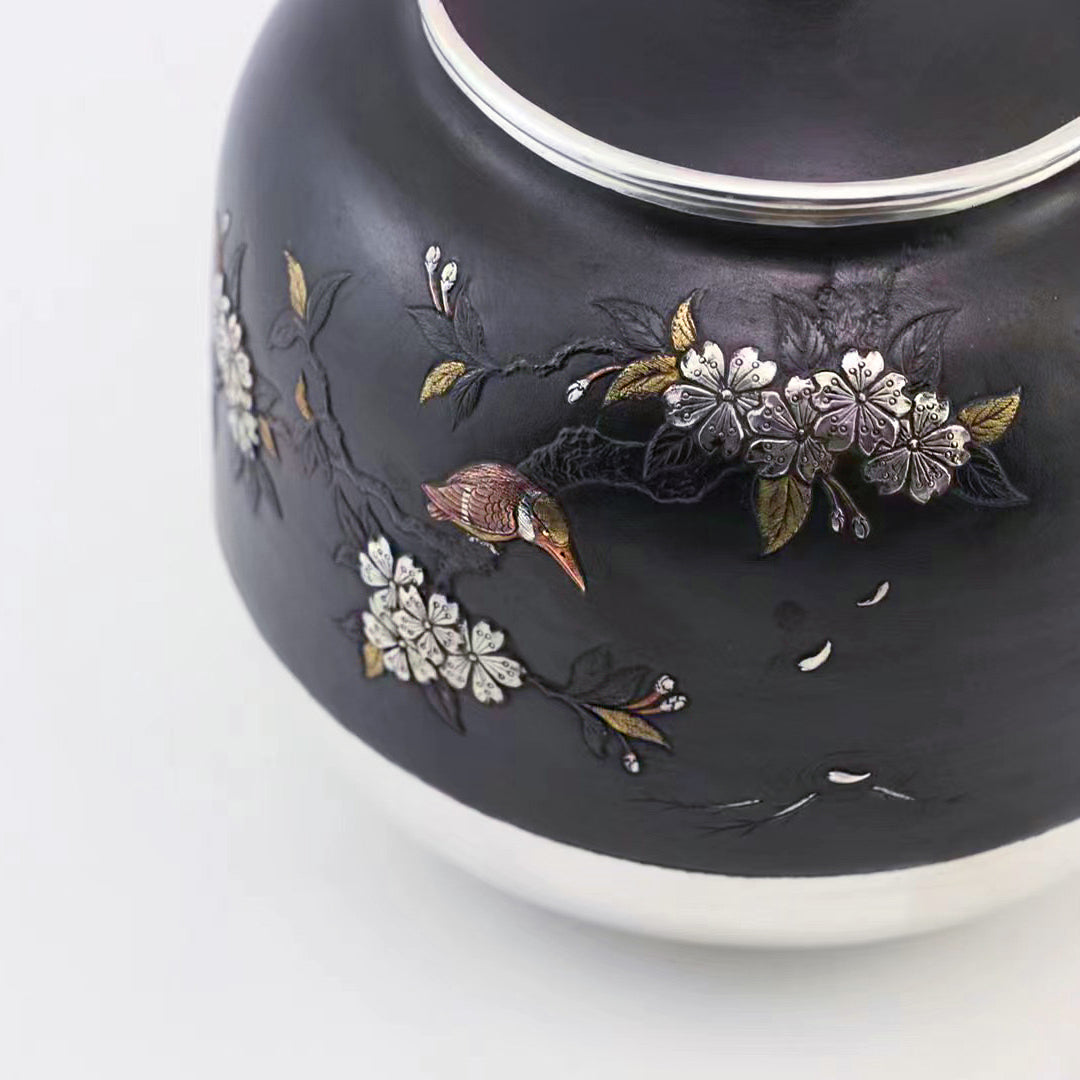

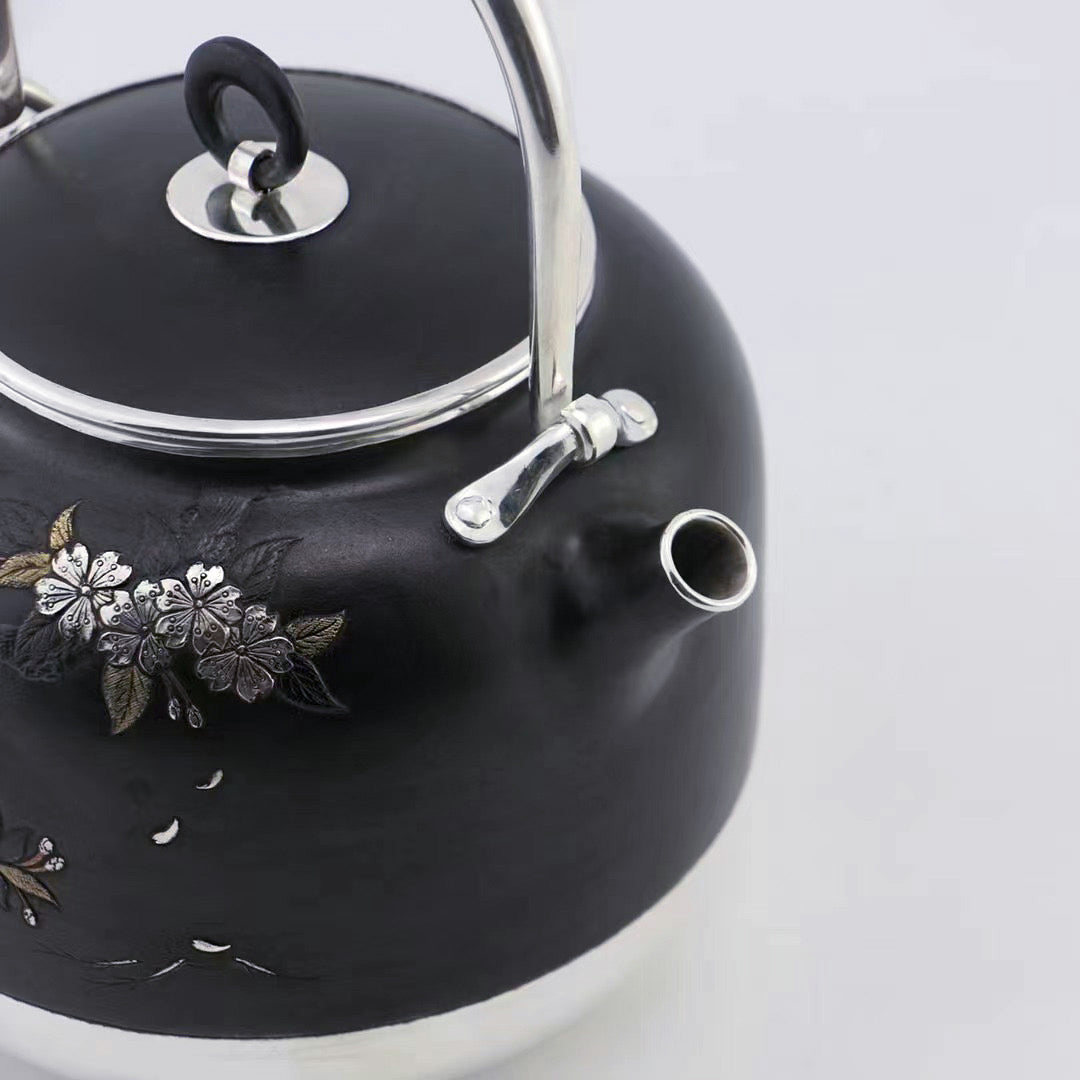




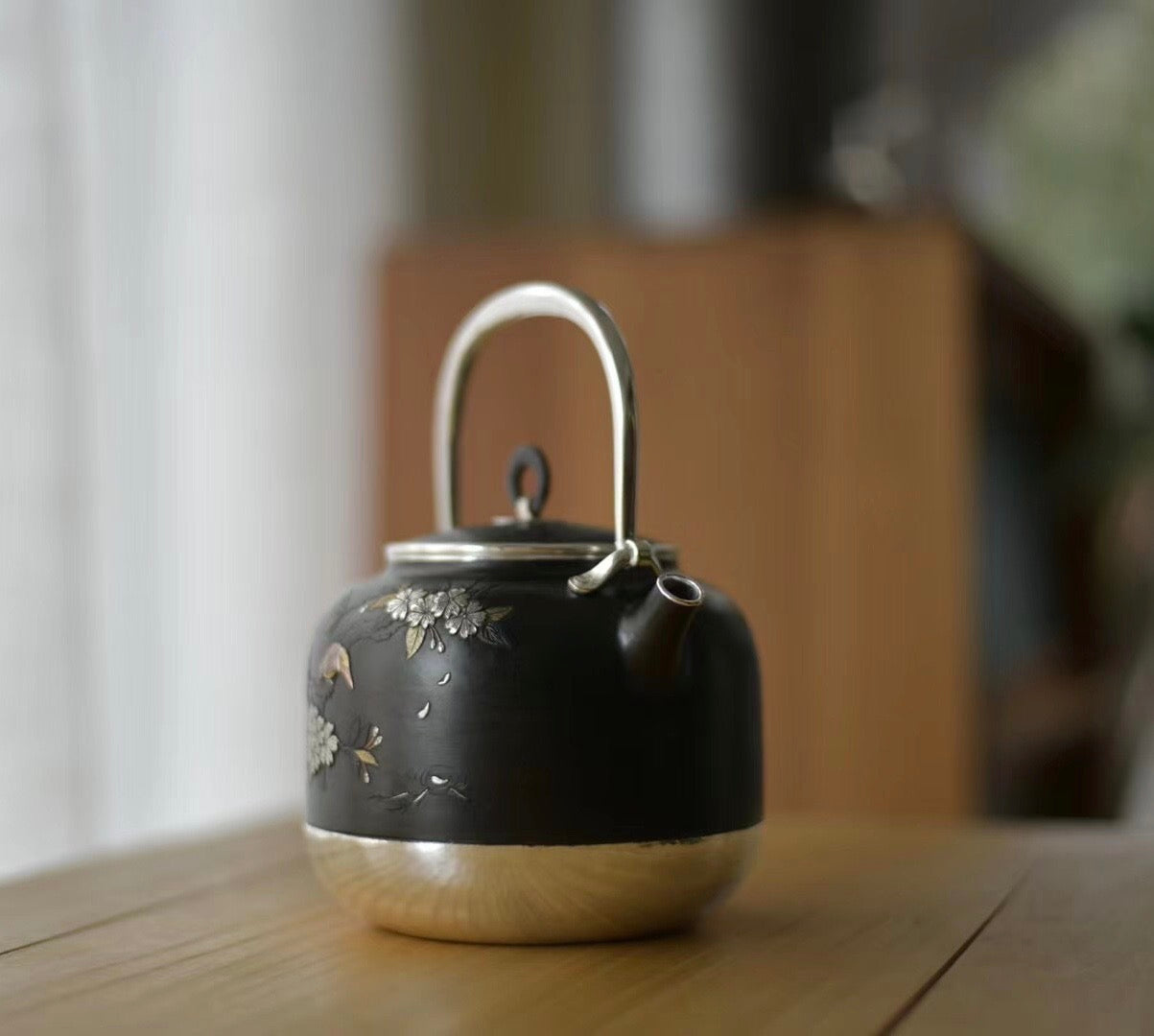
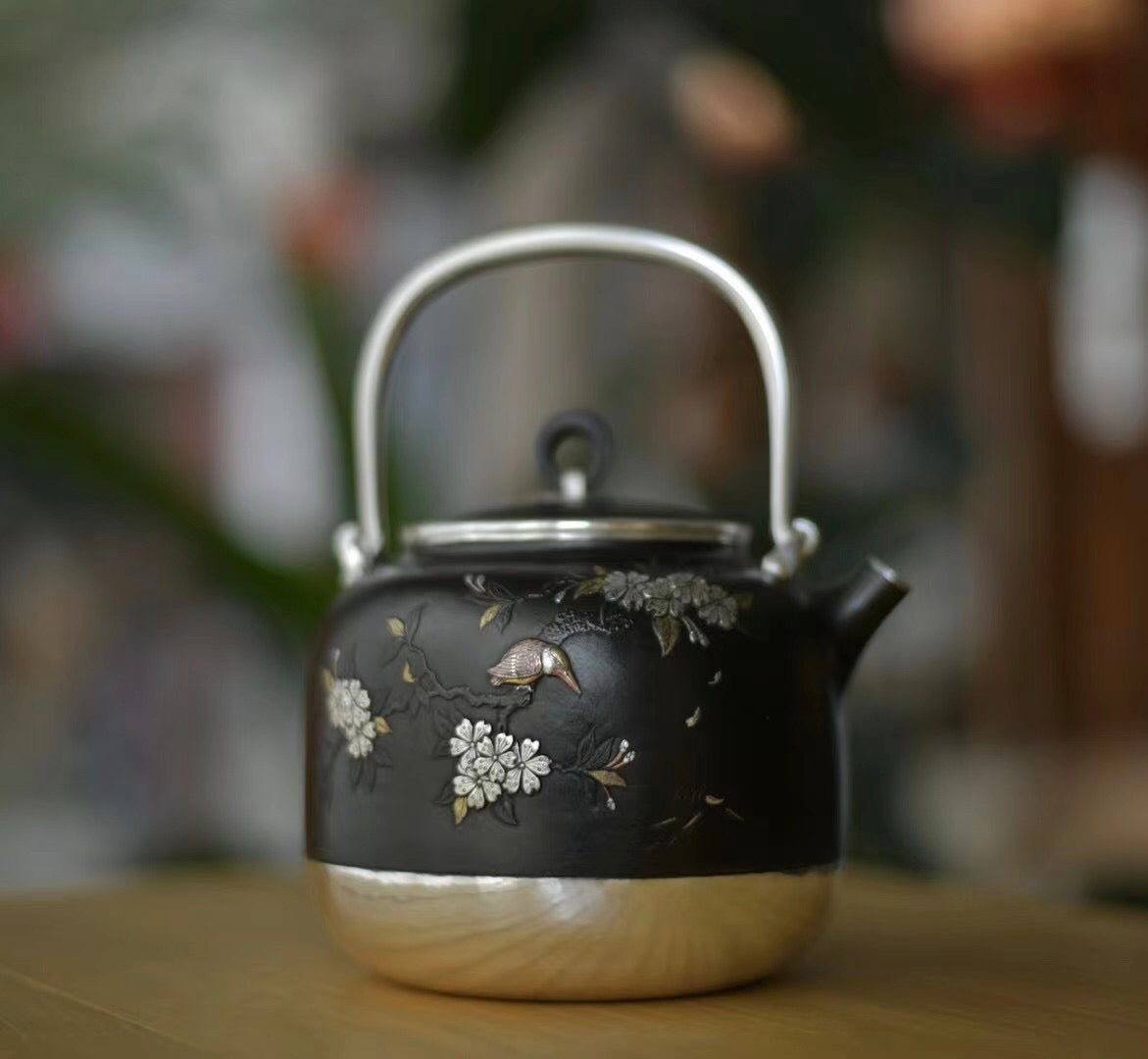
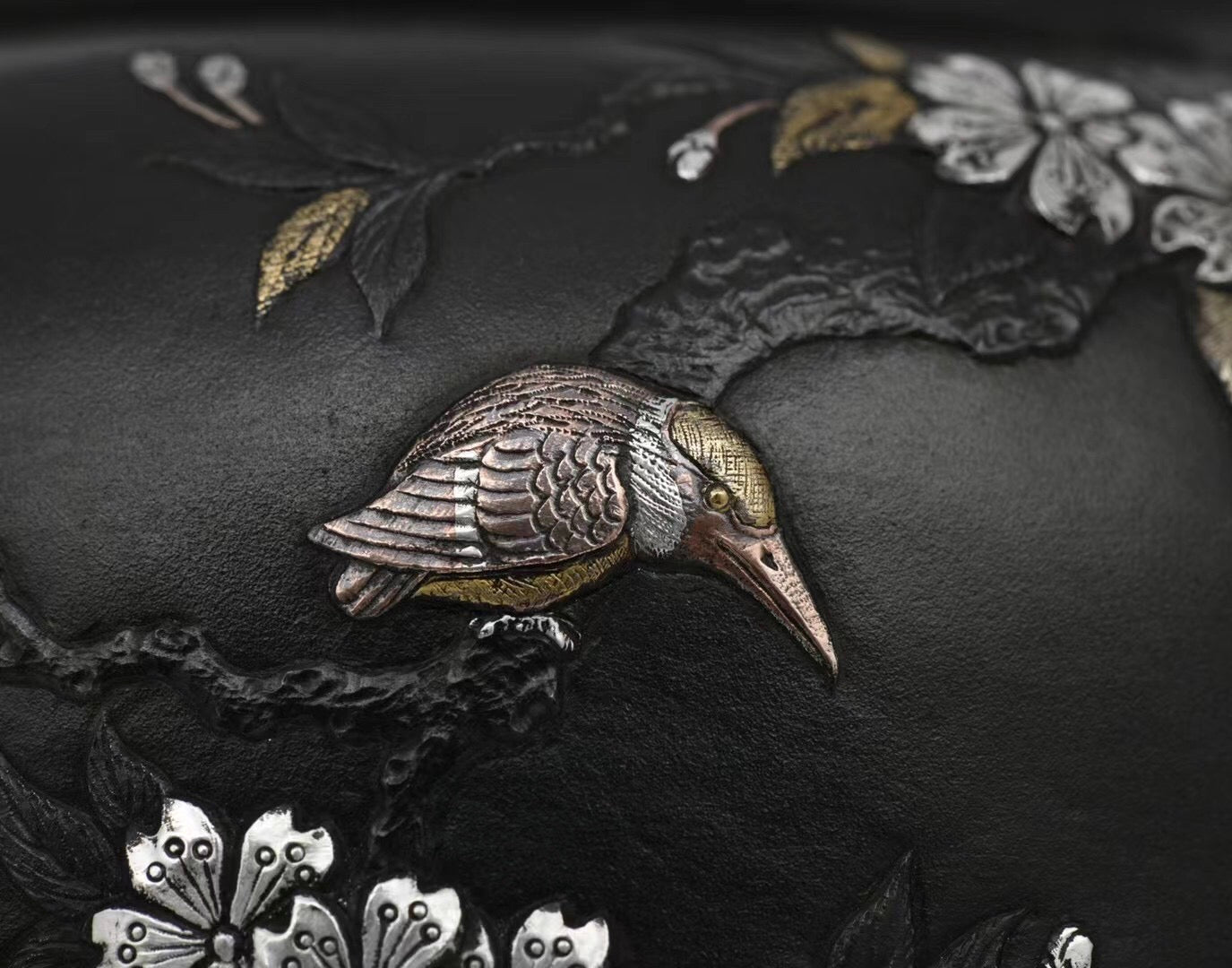


Iron-clad silver flower and bird inlaid gold and silver teapot























Iron-clad silver flower and bird inlaid gold and silver teapot
Iron-clad silver flower and bird inlaid gold and silver teapot
Iron-clad silver flower and bird inlaid gold and silver teapot
Work by Hong Jike, inheritor of the intangible cultural heritage of silver forging techniques: Weight 680g
Capacity: 1200 ml
In March, cherry blossoms begin to bloom, and hummingbirds flock to collect nectar. The fine metalwork, meticulously crafted, engraves a vibrant scene, a beautiful depiction of spring arriving late in the deep mountains.
Iron-clad silver is a rather unique technique in metalworking. It involves first hammering silver into the shape of a teapot, then hammering iron into the same proportions to create a tight bond. This process demands immense patience and skill from the metalworker. The success rate of iron-clad silver teapots is extremely low, making it a very difficult technique in the history of metalworking, which explains the rarity of surviving examples.
Gold and silver inlay is a traditional Chinese metalwork technique, a refined craft. The term "inlay" (错) means "to coat with gold," and is derived from the radical for "gold" (金) and the phonetic component "sound" (音). It first appeared on bronze ware during the Shang and Zhou dynasties. After more than a thousand years of development in bronze craftsmanship, gold and silver inlay flourished during the mid-to-late Spring and Autumn period.
Work by Hong Jike, inheritor of the intangible cultural heritage of silver forging techniques: Weight 680g
Capacity: 1200 ml
In March, cherry blossoms begin to bloom, and hummingbirds flock to collect nectar. The fine metalwork, meticulously crafted, engraves a vibrant scene, a beautiful depiction of spring arriving late in the deep mountains.
Iron-clad silver is a rather unique technique in metalworking. It involves first hammering silver into the shape of a teapot, then hammering iron into the same proportions to create a tight bond. This process demands immense patience and skill from the metalworker. The success rate of iron-clad silver teapots is extremely low, making it a very difficult technique in the history of metalworking, which explains the rarity of surviving examples.
Gold and silver inlay is a traditional Chinese metalwork technique, a refined craft. The term "inlay" (错) means "to coat with gold," and is derived from the radical for "gold" (金) and the phonetic component "sound" (音). It first appeared on bronze ware during the Shang and Zhou dynasties. After more than a thousand years of development in bronze craftsmanship, gold and silver inlay flourished during the mid-to-late Spring and Autumn period.





















Frequently asked questions
Use the FAQ section to answer your customers' most frequent questions.
Order
Yes, we ship all over the world. Shipping costs will apply, and will be added at checkout. We run discounts and promotions all year, so stay tuned for exclusive deals.
It depends on where you are. Orders processed here will take 5-7 business days to arrive. Overseas deliveries can take anywhere from 7-16 days. Delivery details will be provided in your confirmation email.
You can contact us through our contact page! We will be happy to assist you.





